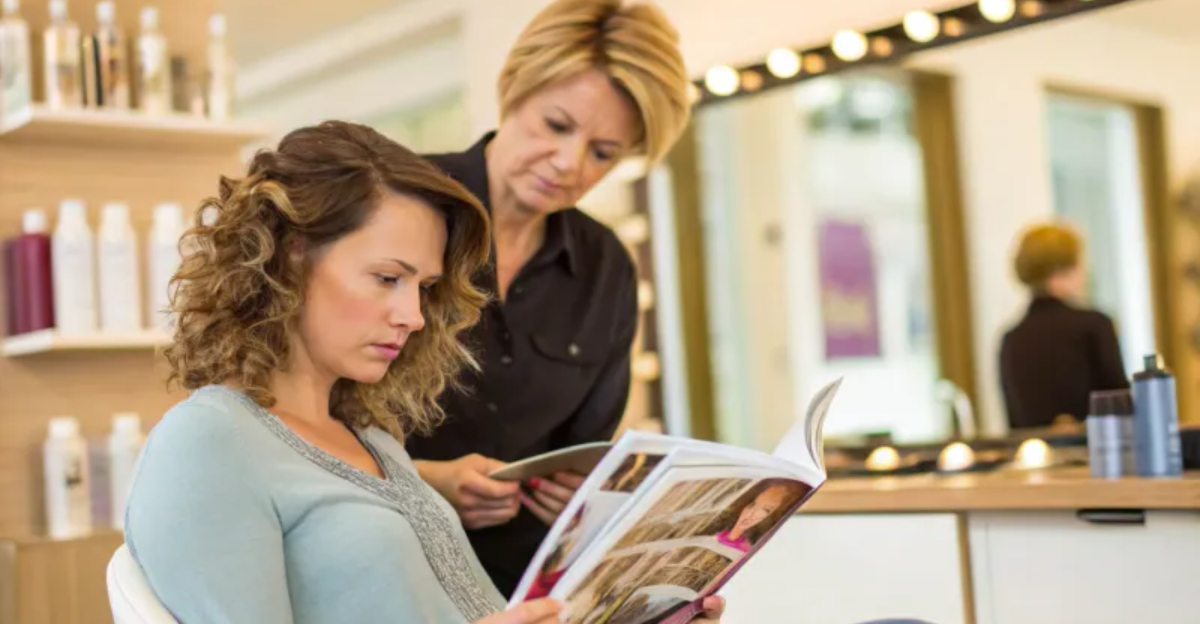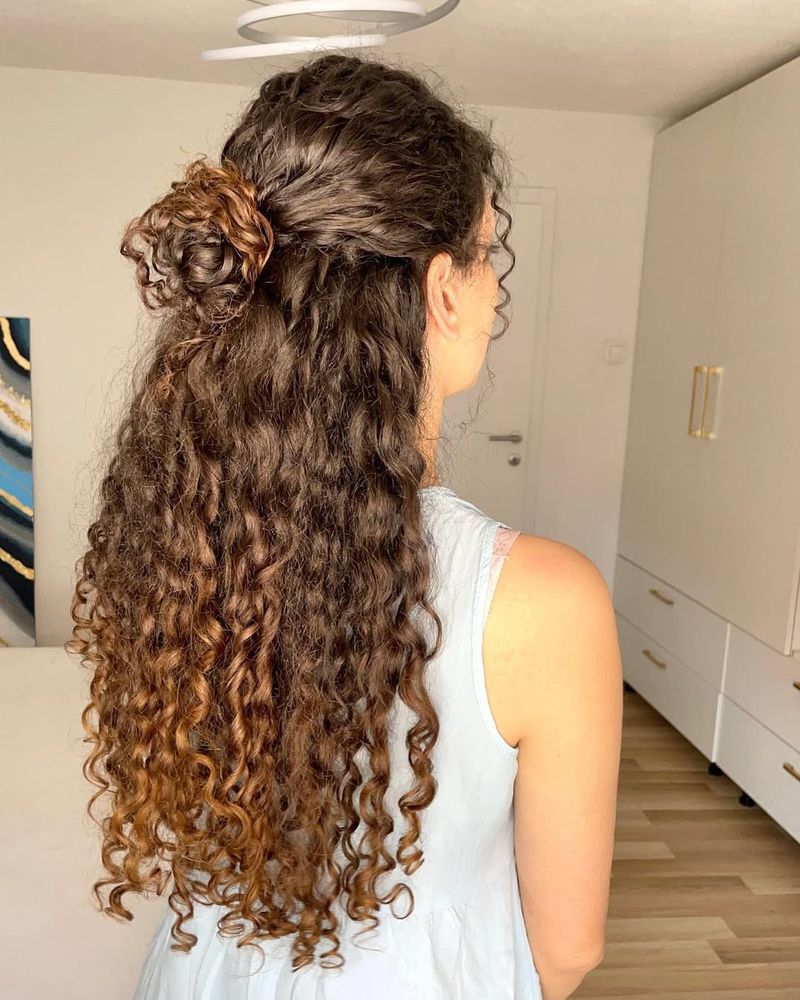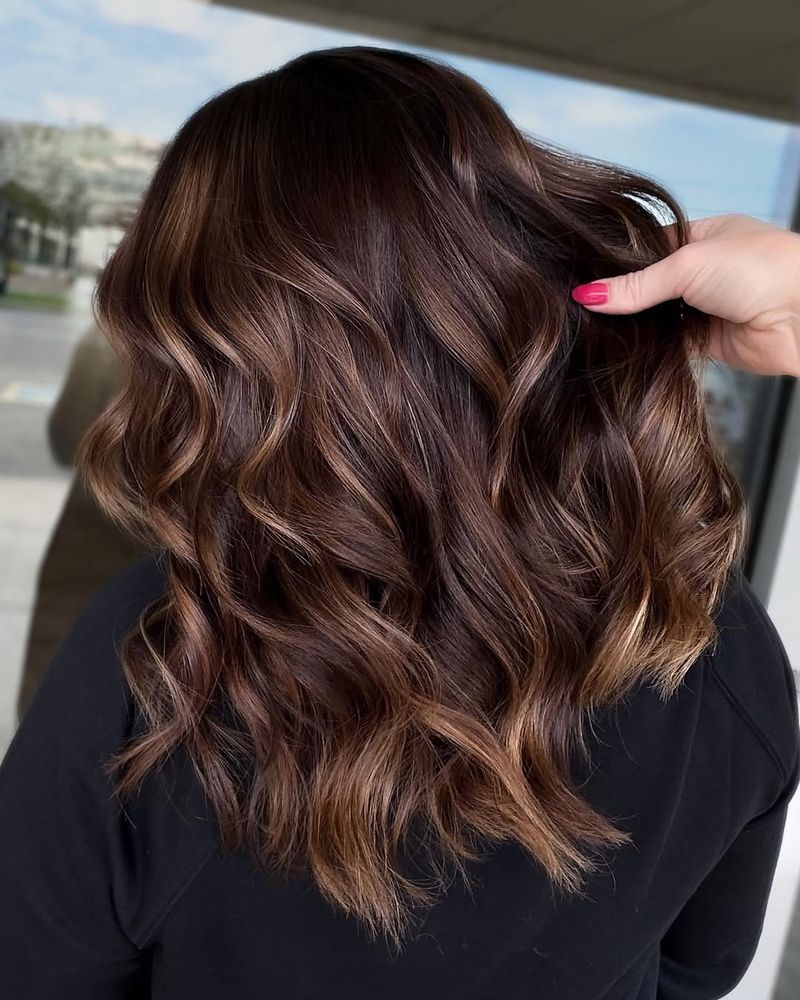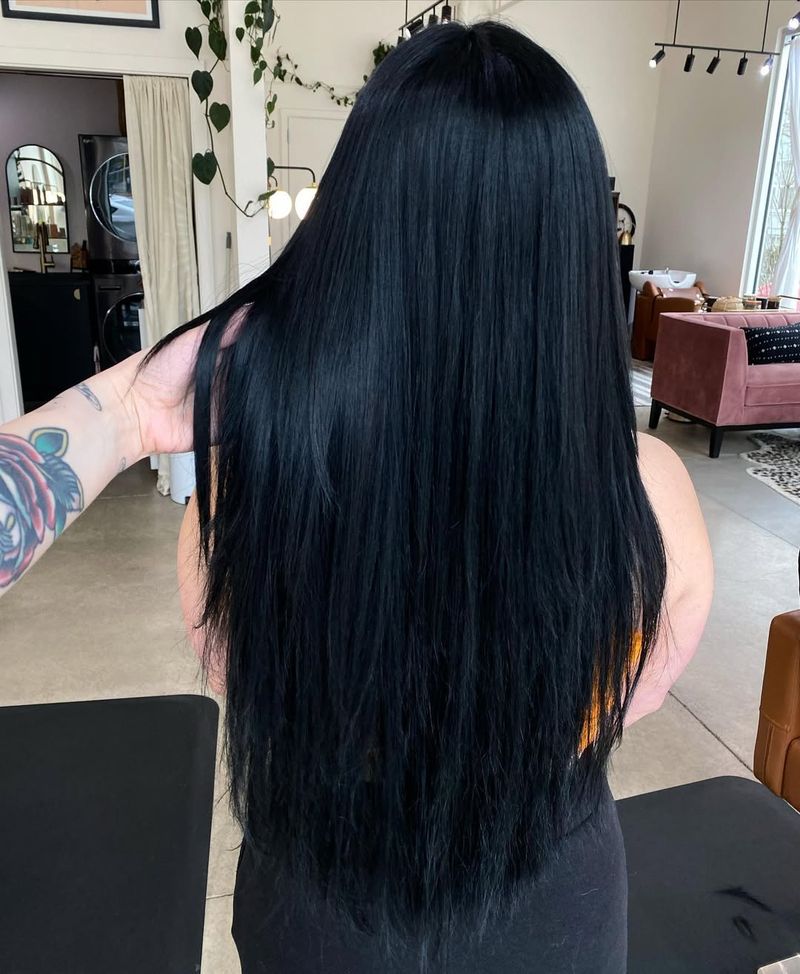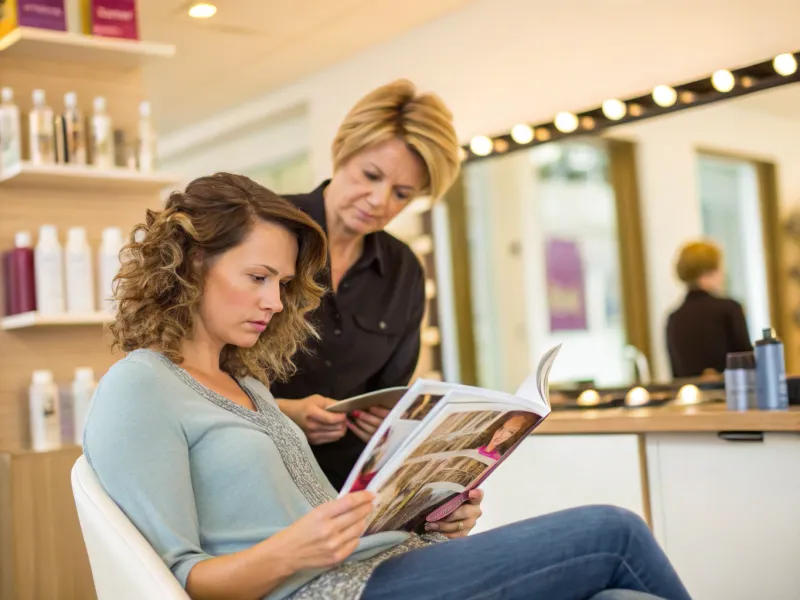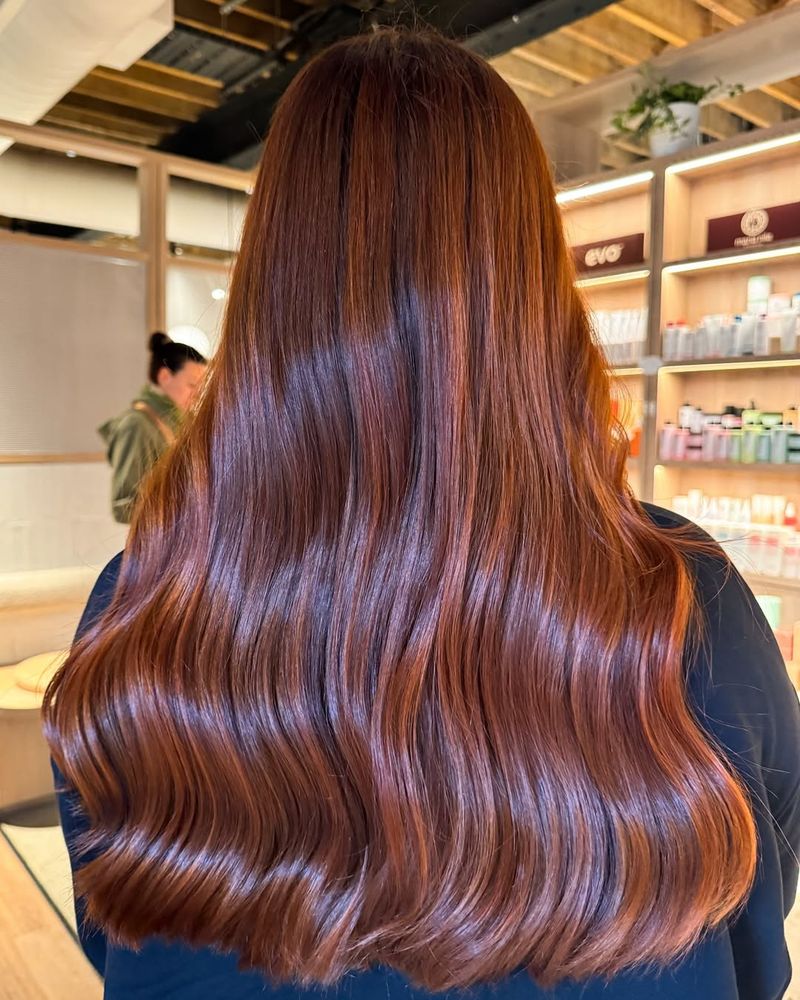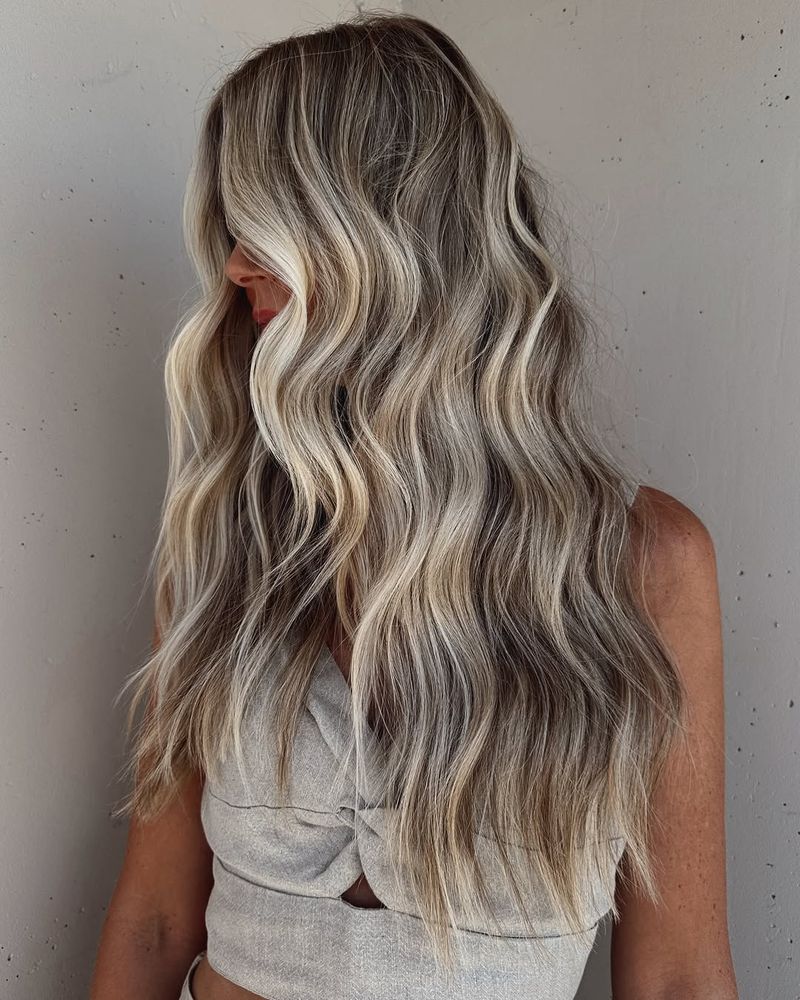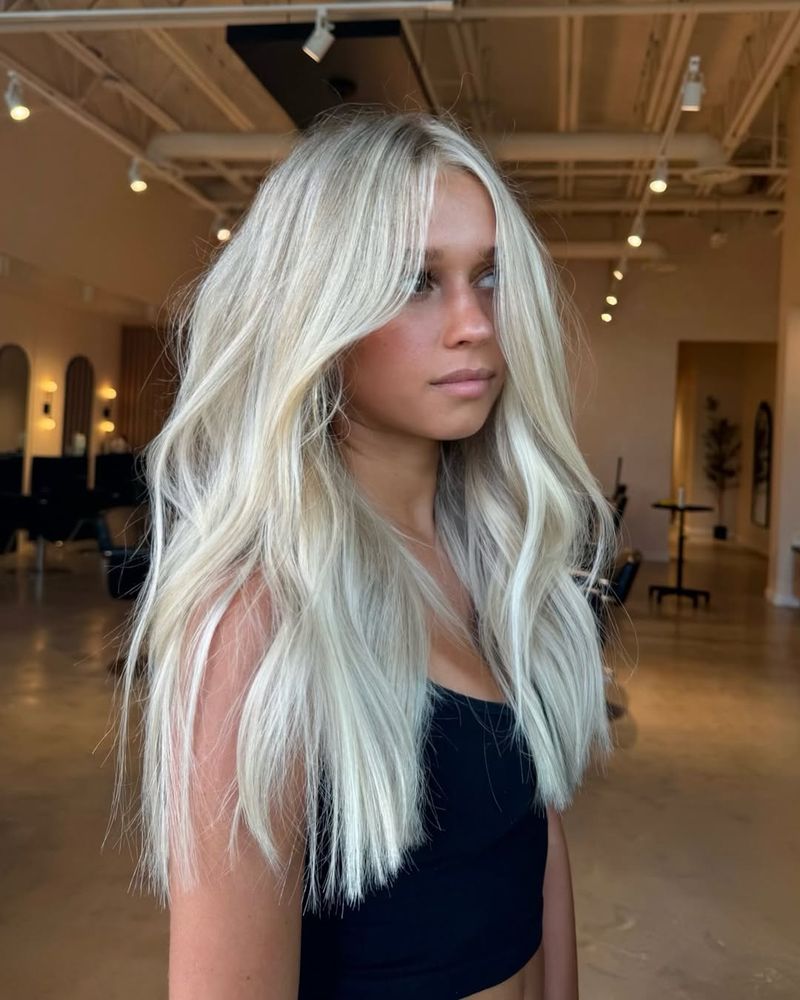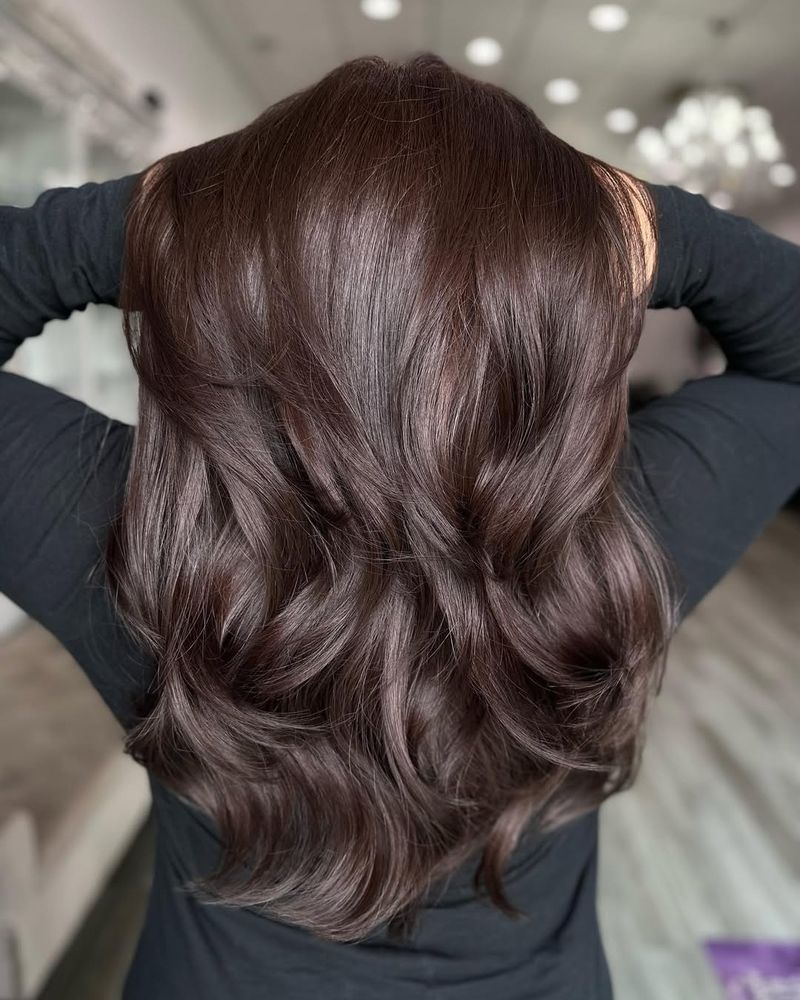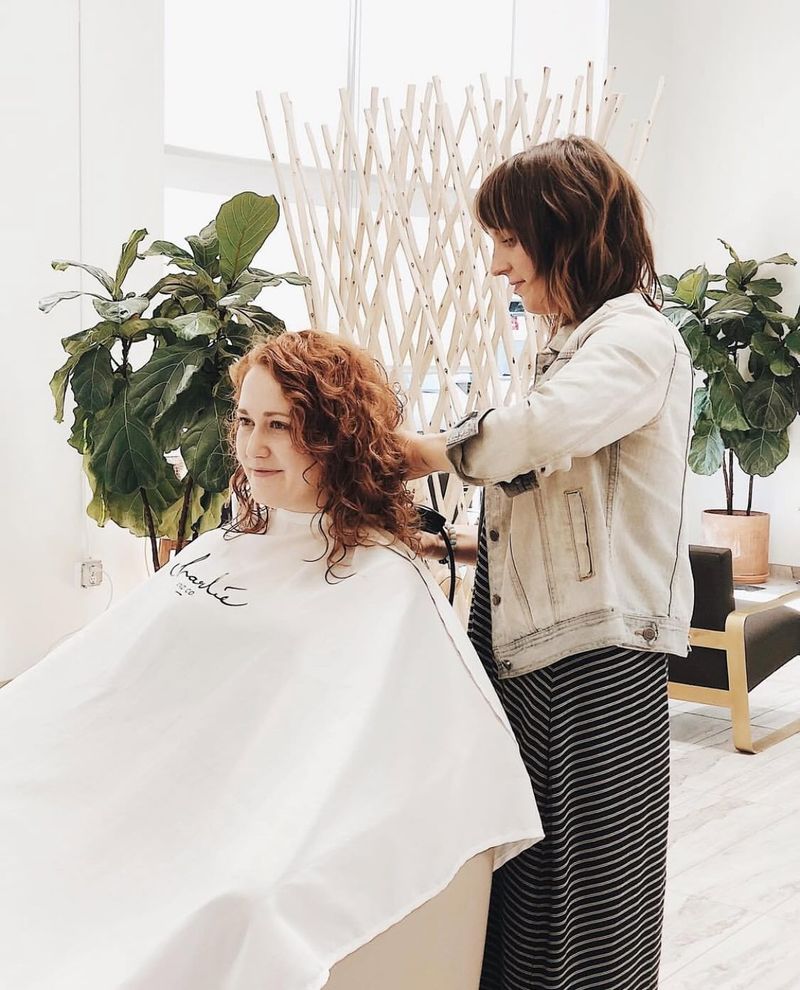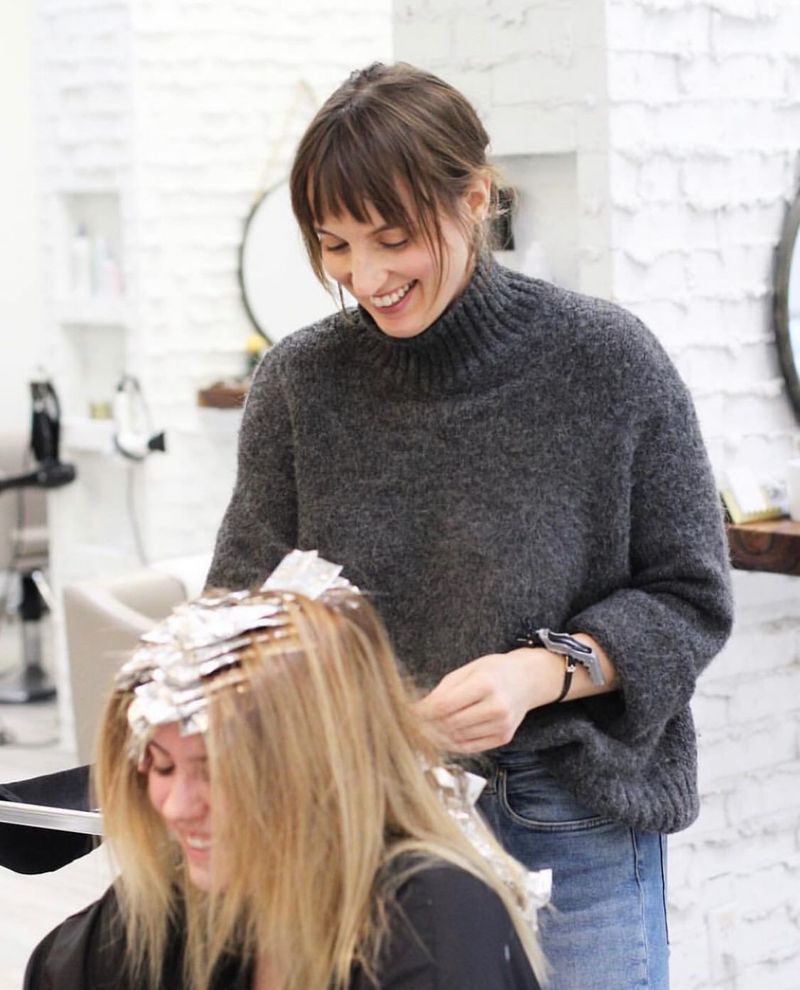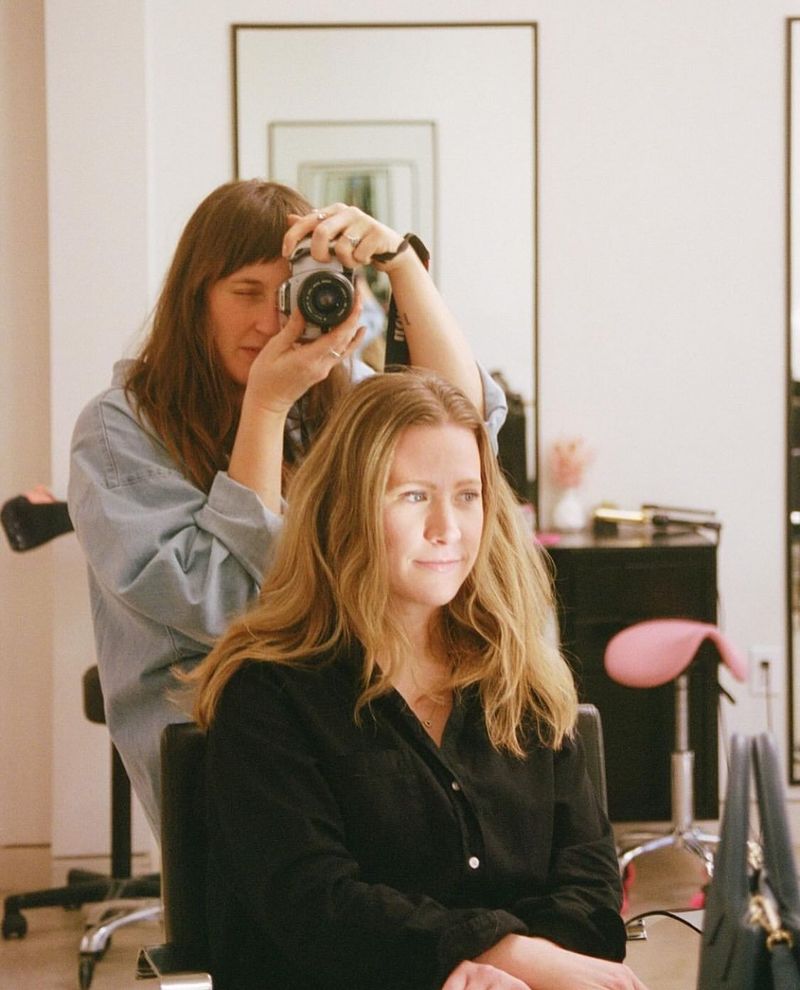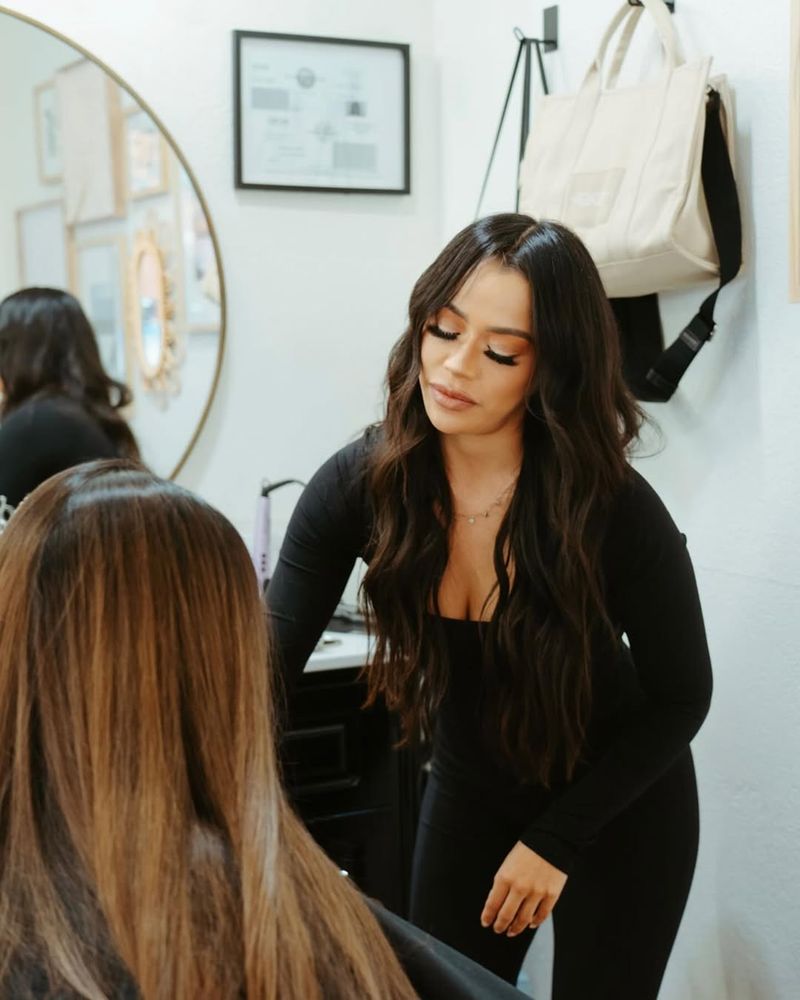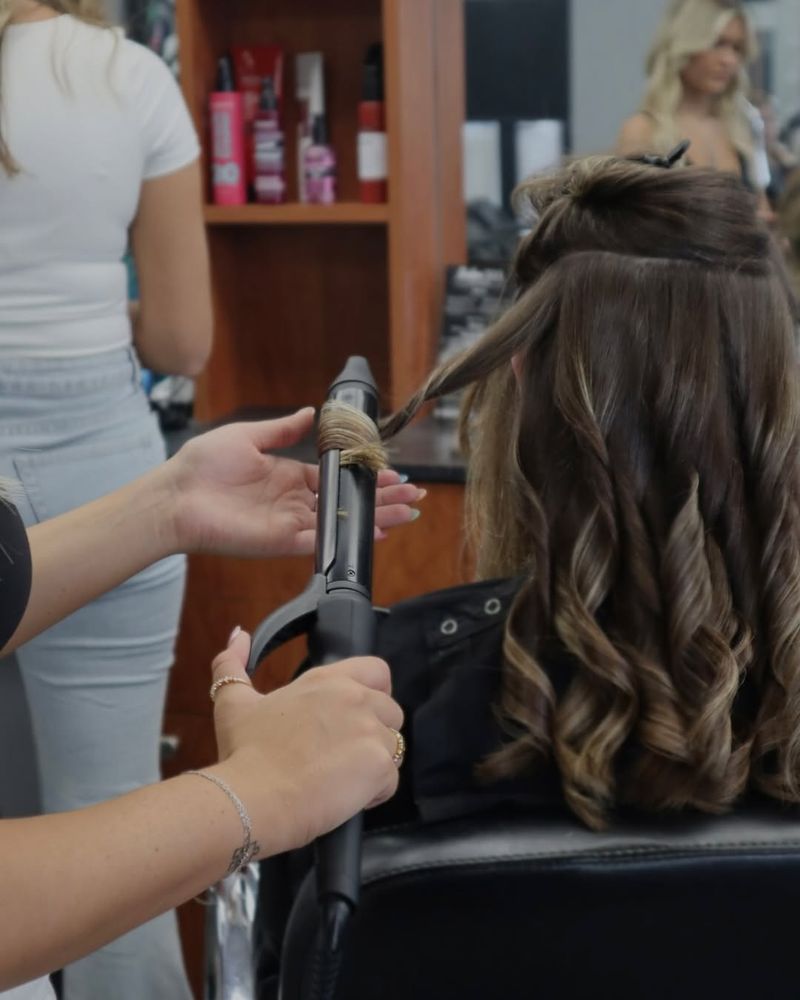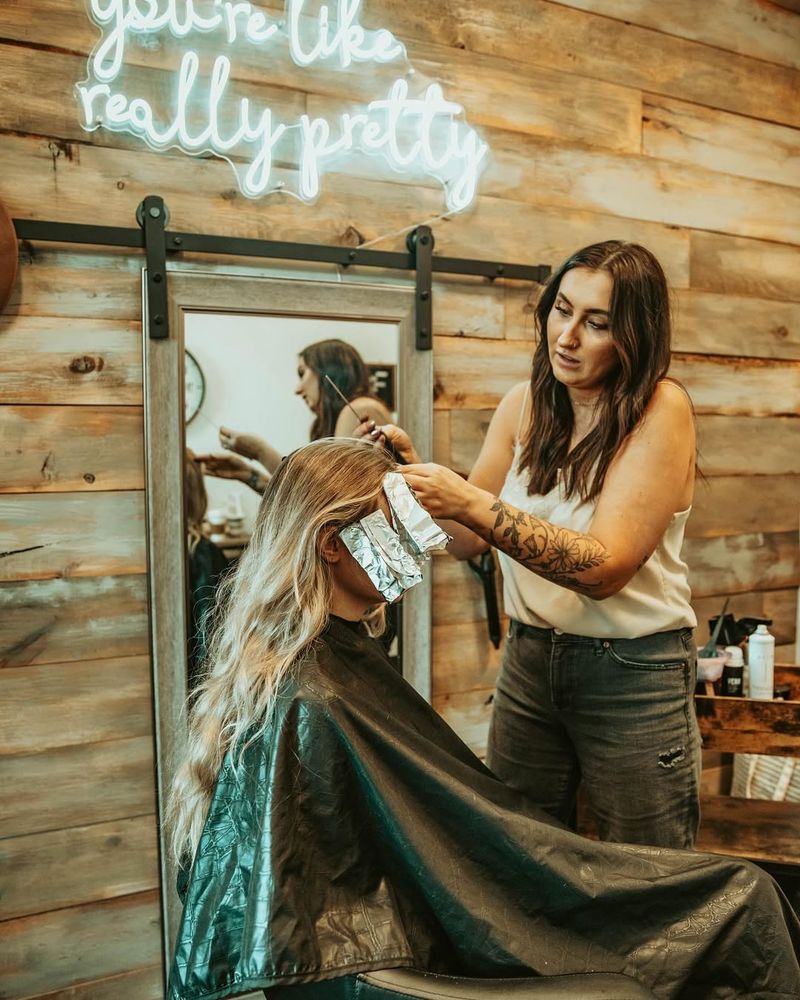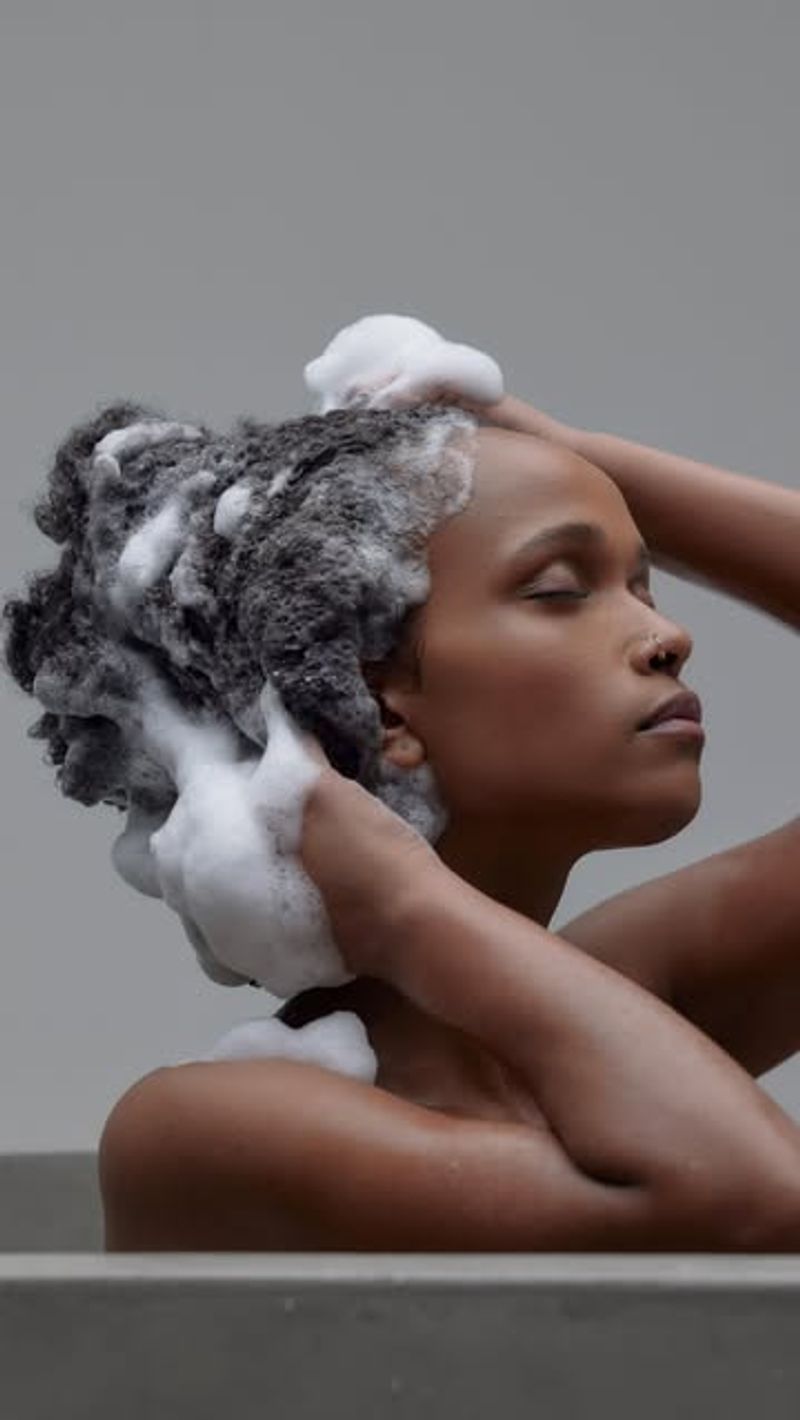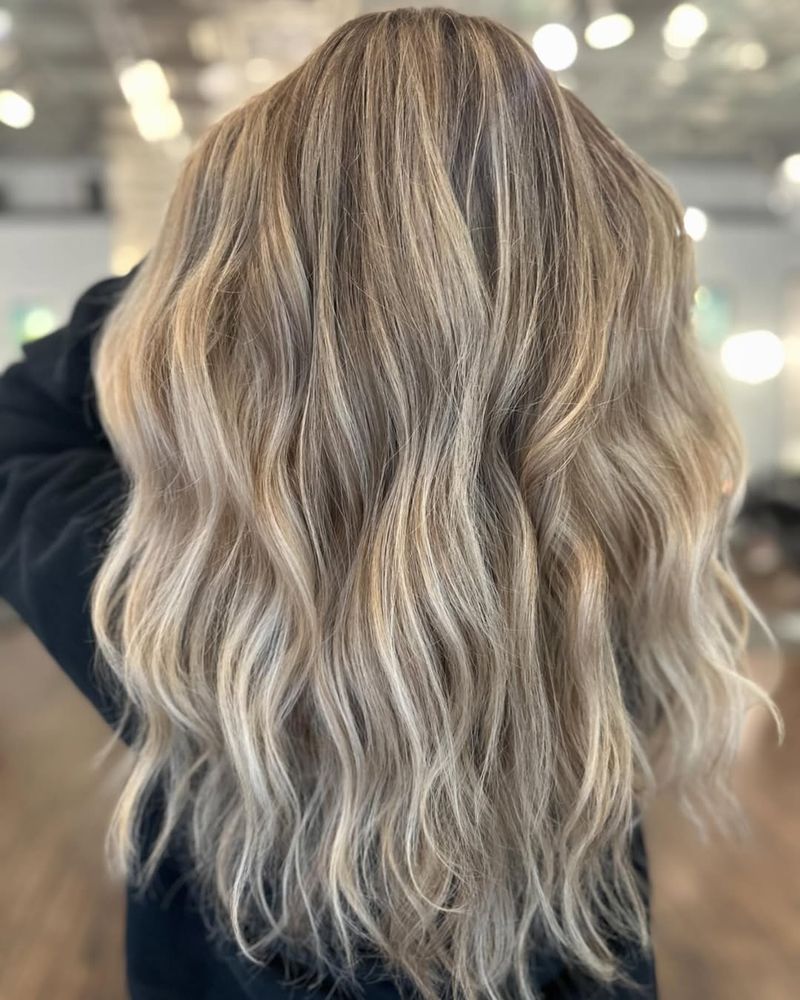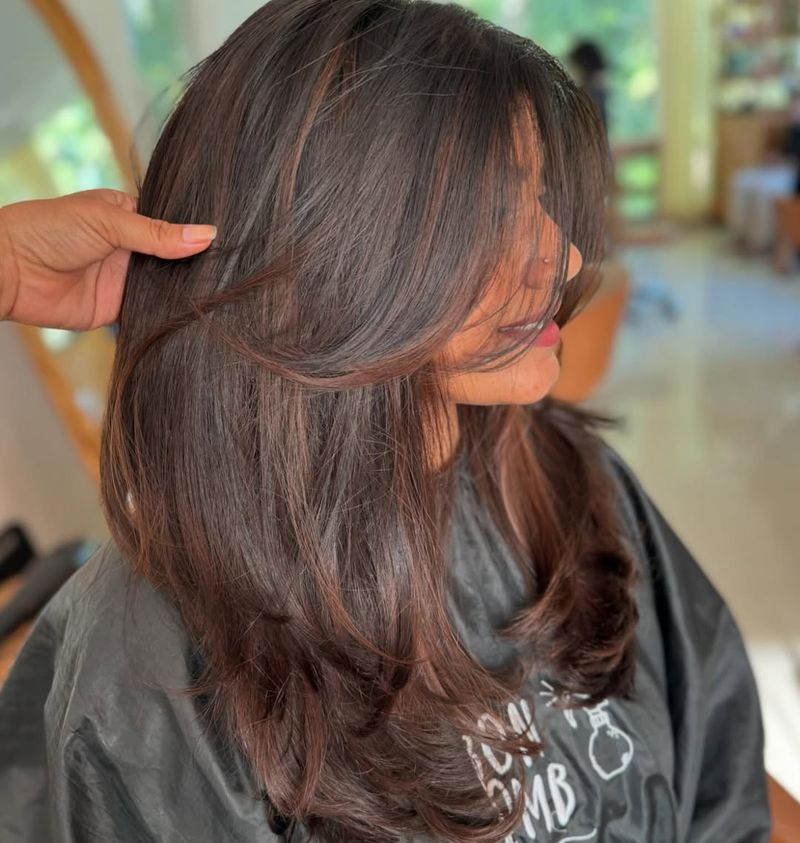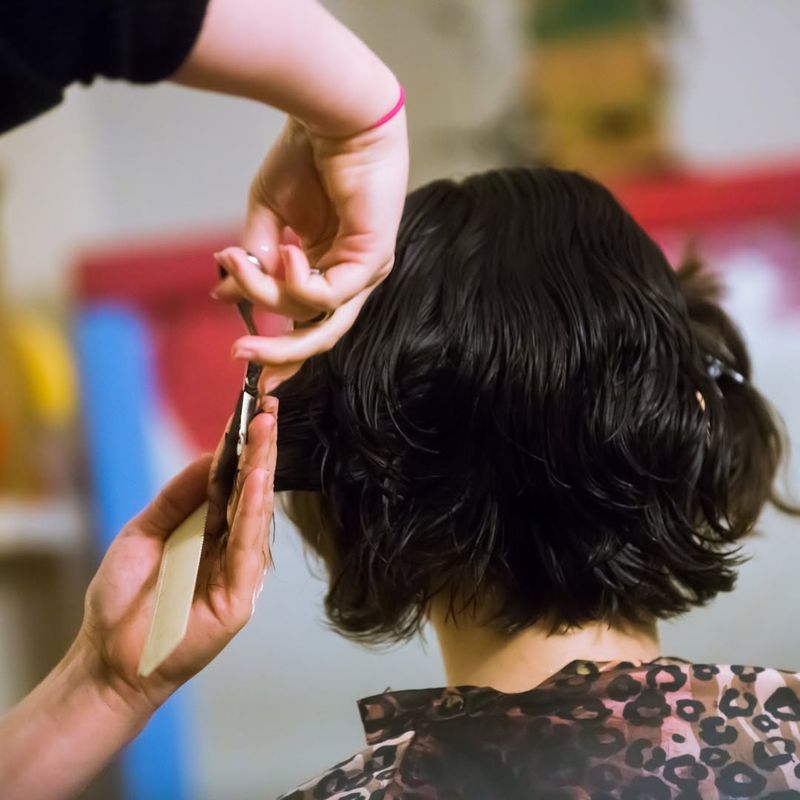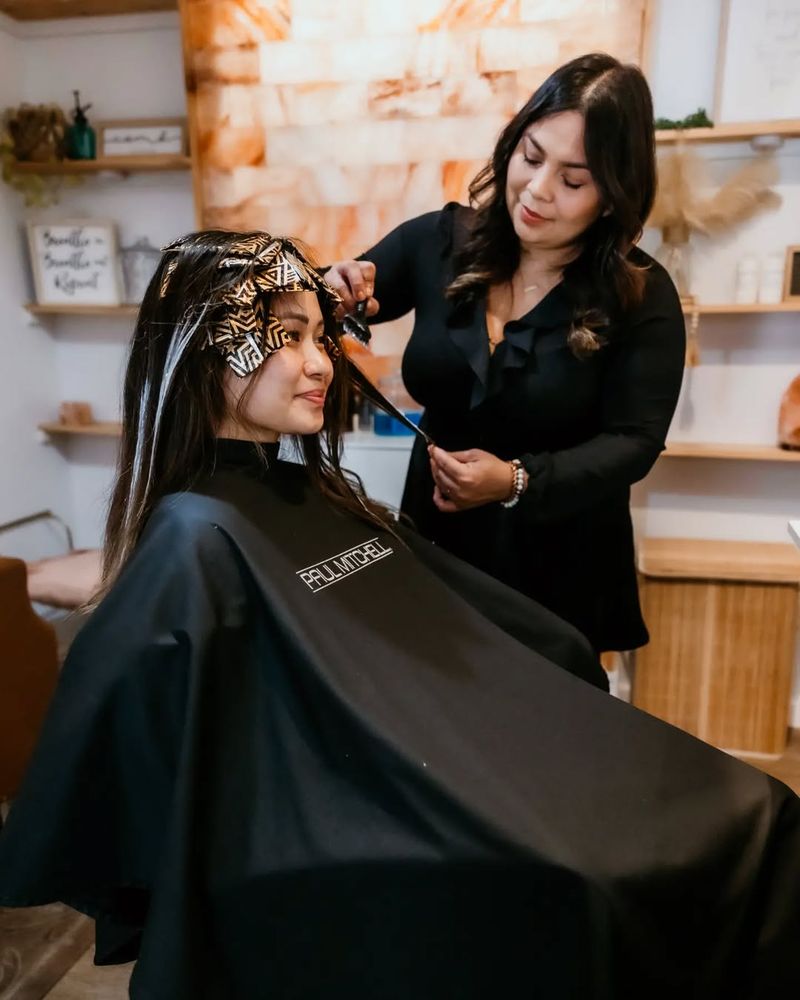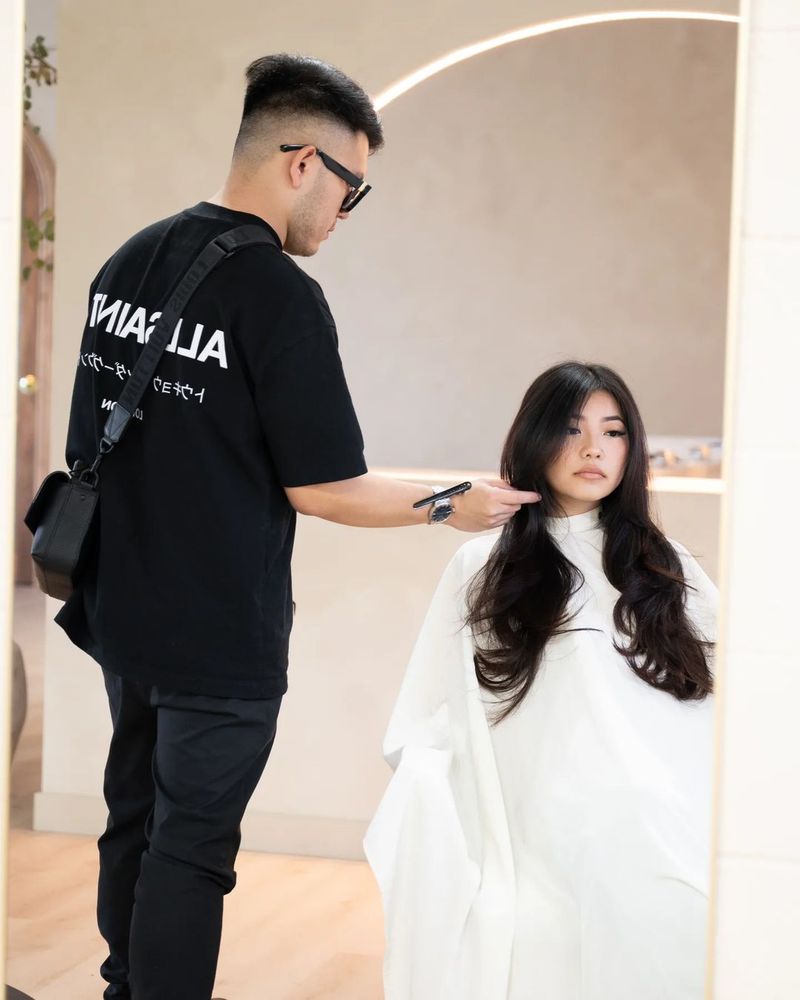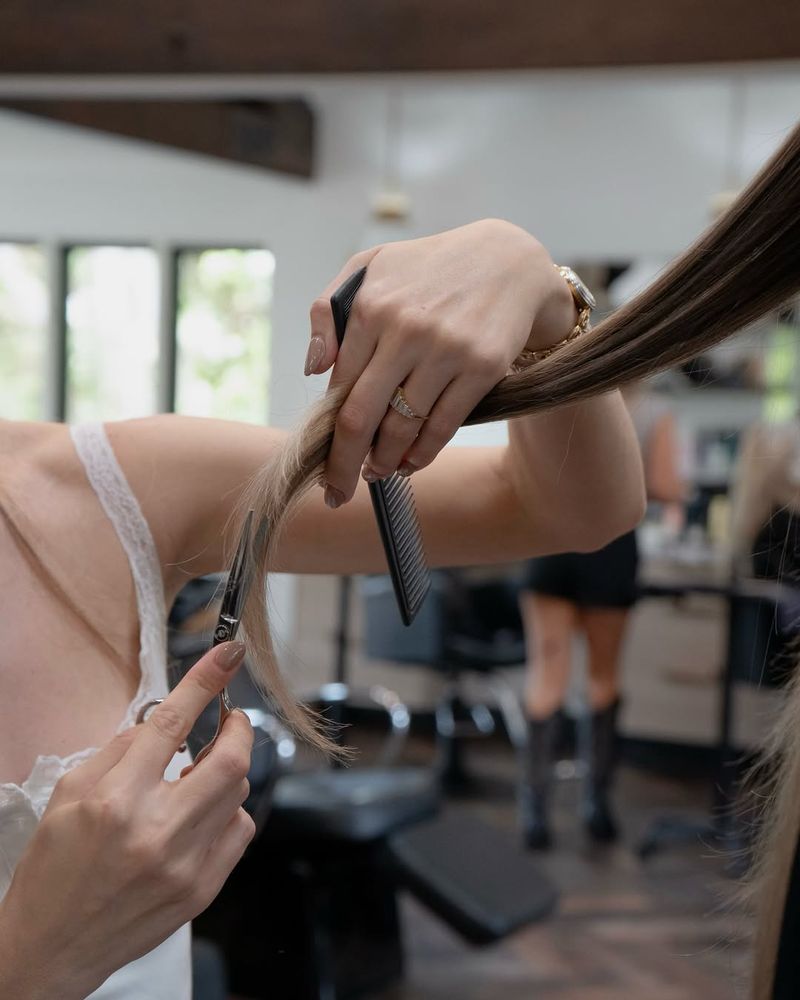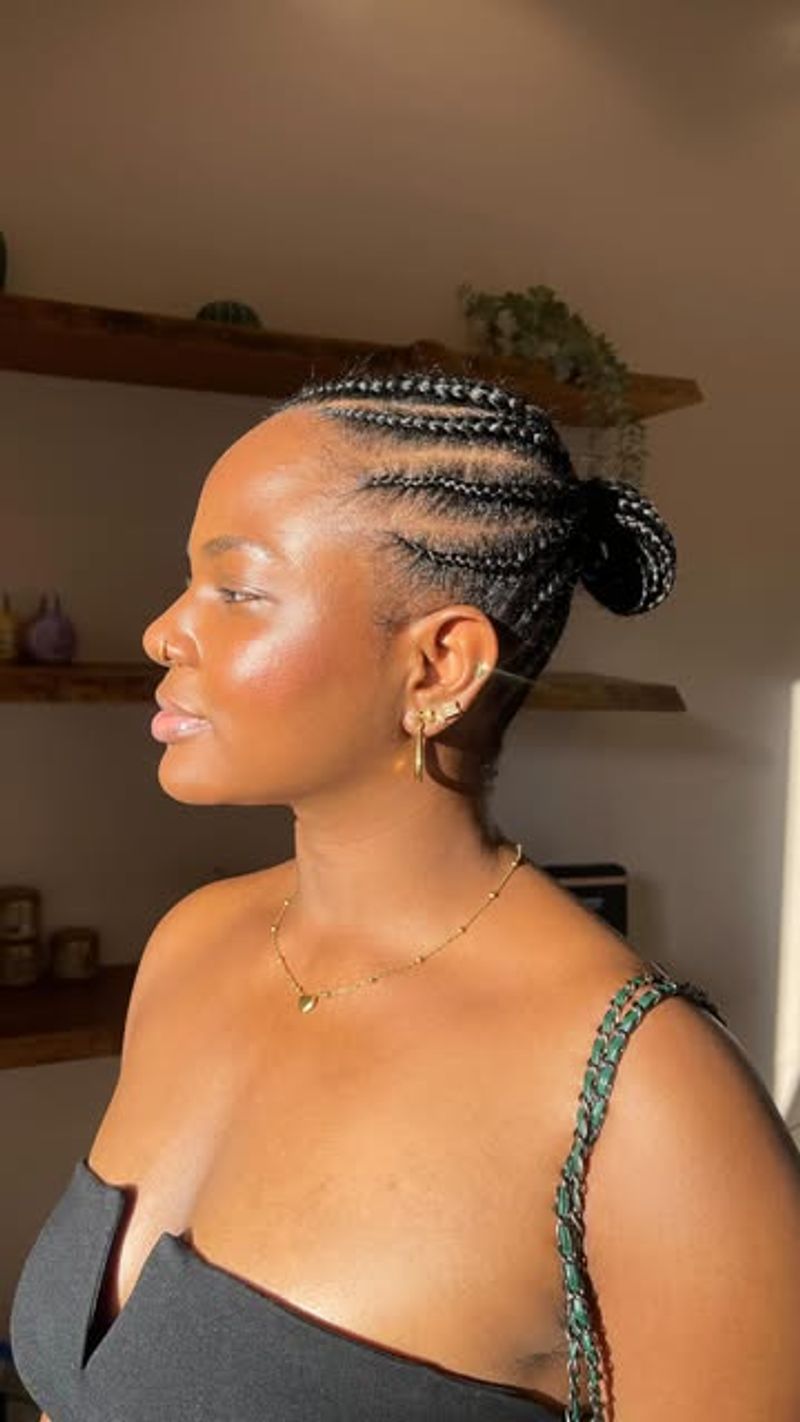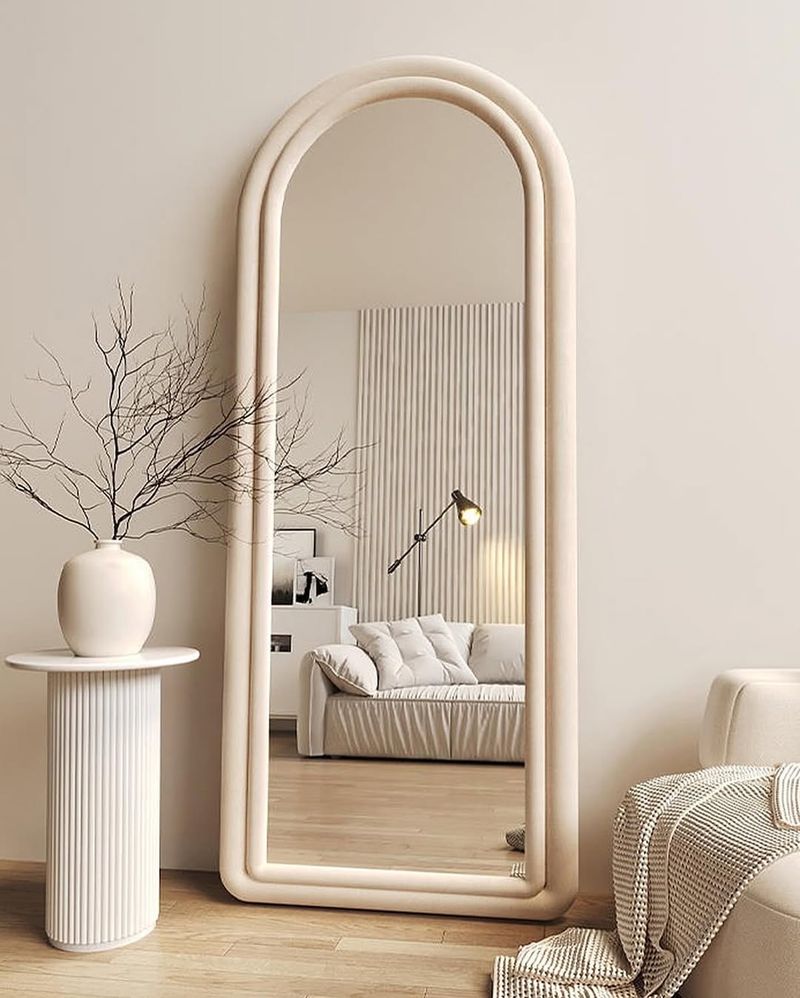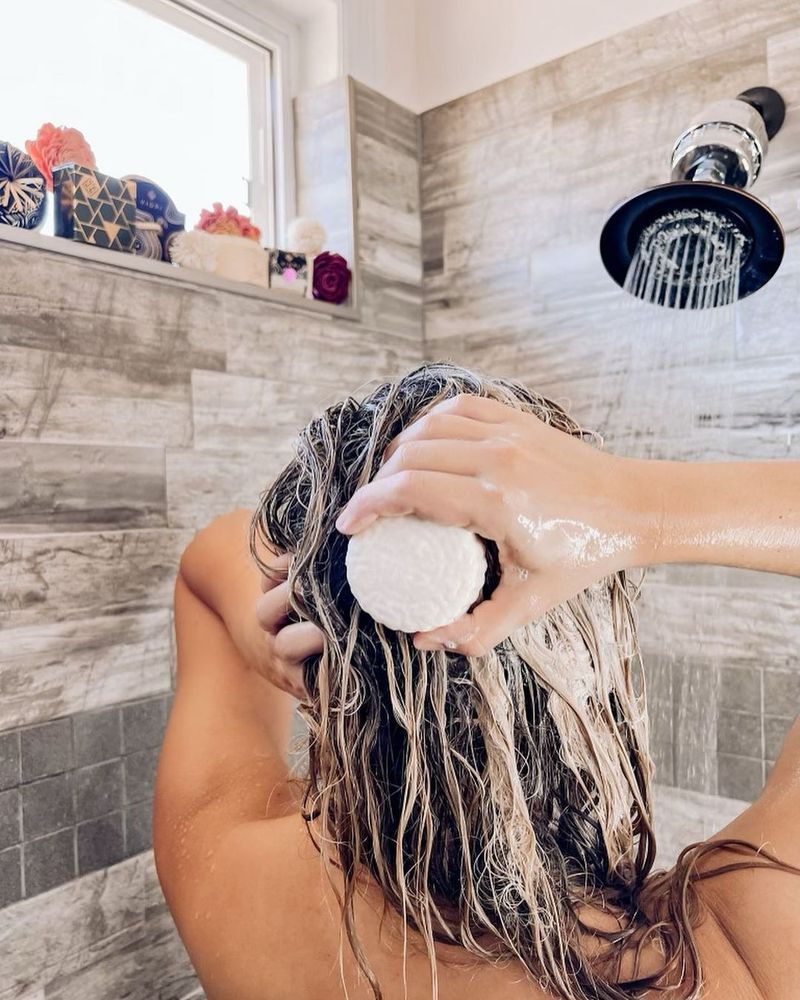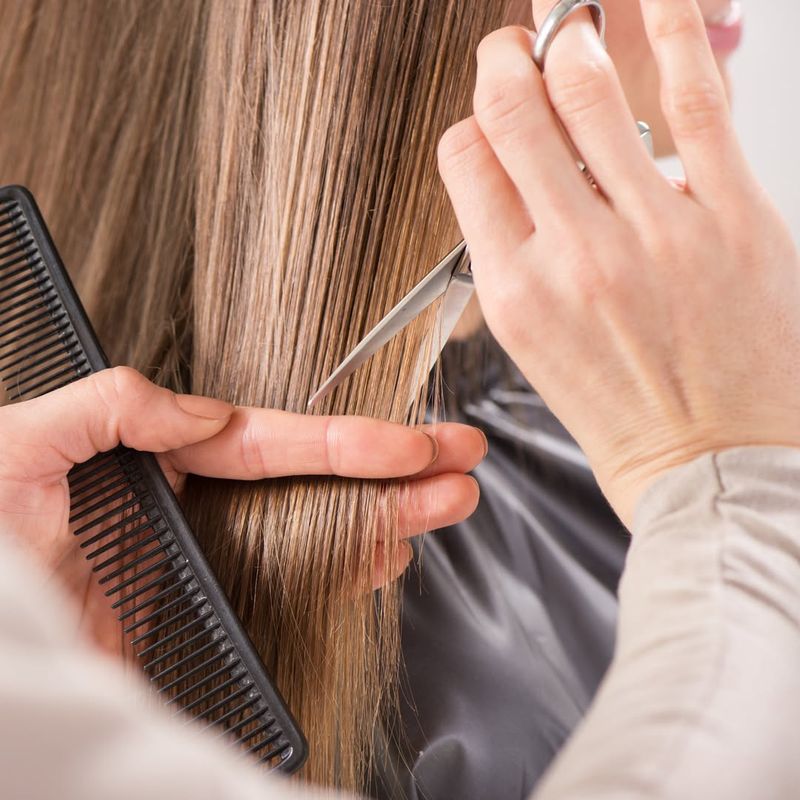When visiting a salon, certain polite habits might not sit well with hairdressers. While these actions are often well-intentioned, they can sometimes disrupt the flow of a stylist’s work or create unintended pressure.
This blog post explores 33 such habits and offers alternative approaches to make your salon visit smooth and enjoyable for both you and your stylist.
1. Arriving Too Early
Arriving too early might seem considerate, but it can throw off a stylist’s schedule. They may feel rushed to accommodate you sooner than planned.
Related: -7 Straight-Hair Problems No One Talks About And 8 Easy Fixes That Shine
Instead, aim to arrive just a few minutes before your appointment time. This way, you respect their time and allow them to prepare without added pressure or distraction.
2. Bringing Food With You
Bringing food into the salon might be seen as polite if you’re in a rush, but it can create messes and odors that are unpleasant for others.
Stylists appreciate a clean space, so try to eat beforehand or keep snacks discreet and tidy. A simple granola bar might be a better on-the-go choice.
3. Oversharing Personal Stories
Sharing stories with your stylist can be enjoyable, but oversharing personal details might make them uncomfortable. Hairdressers often prefer light conversation that keeps the mood uplifting.
Stick to fun and casual topics unless your stylist initiates deeper discussions. This keeps the salon atmosphere pleasant and helps maintain professional boundaries.
4. Bringing Children to the Appointment
While some parents think it’s convenient to bring kids along, salons are often not child-friendly environments.
Unsupervised children can lead to accidents or distractions. If possible, arrange childcare beforehand or book appointments during school hours. This ensures a calm and hazard-free environment for everyone involved in the salon experience.
5. Being Indecisive About Style
Indecisiveness can delay your appointment and affect subsequent clients. Stylists appreciate clients who have a clear idea of what they want.
If you’re unsure, consider discussing potential styles with your stylist in advance or bringing photos as references. This preparation can streamline the process and lead to more satisfying results.
6. Talking on the Phone During the Appointment
Using a phone during the session can be disruptive and disrespectful to your stylist. Conversations might distract them or interfere with their work.
If a call is urgent, inform your stylist and keep it brief. Otherwise, it’s best to let calls go to voicemail and return them after your appointment is over.
7. Switching Stylists Frequently
Switching stylists too often might seem like a way to explore different expertise, but it can be disheartening for regular stylists.
Building a rapport with one stylist allows for better understanding and consistency in your hair care. If you feel the need to change, communicate your reasons; professionals appreciate constructive feedback.
8. Not Mentioning Allergies or Preferences
Failing to mention allergies or preferences might seem unimportant, but it can lead to uncomfortable or unsafe experiences. Hairdressers need to know your skin sensitivities or product dislikes.
Before your appointment, make a list of any important details to share. This ensures your stylist can tailor their services to your specific needs safely.
9. Bringing Your Own Products Without Discussion
Arriving with personal hair products may feel necessary, but it can undermine a stylist’s professional expertise. They select products based on your hair type and desired outcomes.
Communicate any concerns about products beforehand, as they might have alternatives that suit you. Collaboration ensures a balance between professional care and personal comfort.
10. Haggling Over Pricing
Negotiating prices might be common in markets, but in salons, it can come across as disrespectful. Prices reflect the stylist’s skill, product quality, and time.
If budget is a concern, discuss services and costs upfront, or inquire about promotions. This transparency respects both your financial needs and the stylist’s professional value.
11. Canceling Last Minute
Canceling last minute disrupts a stylist’s schedule and income. Emergencies happen, but try to notify the salon as soon as possible. If you regularly reschedule, consider booking at quieter times or when your calendar is more predictable.
This helps salons adjust quickly and fill your slot, minimizing their inconvenience and loss of earnings.
12. Asking for Unreasonable Discounts
Requesting large discounts might seem like a way to save money, but it undervalues a stylist’s work. Salons set prices based on services, skill, and materials.
If you’re budget-conscious, ask about loyalty programs or bundled services. Such options often provide savings while maintaining respect for the hard work and expertise stylists offer.
13. Bringing Too Many Friends
Bringing friends might seem fun, but too many can crowd and disrupt the salon environment. It strains the space and can be distracting for stylists.
If you wish to share the experience, invite one friend at a time or suggest meeting after your appointment. This maintains a professional atmosphere and respects other clients’ comfort.
14. Wearing Difficult Clothing
Wearing complex outfits with tight collars or numerous accessories can complicate hair services. Stylists prefer clients wear comfortable, easy-to-remove clothing.
Consider wearing something loose-fitting with minimal jewelry. This allows stylists to maneuver easily around your head and reduces the risk of snagging or staining your clothes, ensuring a smoother experience.
15. Showing Up Sick
Visiting a salon while sick can spread illness to stylists and other clients. It’s considerate to reschedule if you’re unwell.
Salons appreciate clients who prioritize health by staying home when contagious. When you feel better, your stylist will be more than happy to accommodate you, ensuring everyone’s safety and comfort are maintained.
16. Expecting a Stylist to Fix Another’s Mistakes
Expecting a stylist to fix another’s work can place them in a difficult position. While they strive to help, it’s best to communicate openly about what you want corrected.
Understand that some issues may require multiple visits. Patience and clear explanations will help achieve desired results while respecting the stylist’s professional ability.
17. Not Tipping Fairly
Neglecting to tip well might seem trivial, but it impacts a stylist’s morale and income. Tipping acknowledges their skill and hard work. If unclear about tipping norms, ask beforehand or check online for guidelines.
Customary tips often range between 15% to 20%. A fair tip supports your stylist’s livelihood while fostering a positive relationship.
18. Being Too Timid to Speak Up
Being shy about expressing dissatisfaction can lead to regret. Stylists value open communication to ensure happiness with the results.
If something feels off, kindly inform your stylist during the process. They prefer making adjustments than having clients leave unhappy. Honest feedback guides them to refine their techniques and build trust with clients.
19. Ignoring Hair Care Advice
While you may think your routine works, ignoring professional advice can hinder hair health. Stylists offer recommendations tailored to your hair type and lifestyle.
If unsure, ask follow-up questions or for simpler alternatives. Your stylist wants the best for your hair, and following their guidance can lead to healthier, more manageable styles in the long run.
20. Being Rude or Impatient
Impatience or rudeness can create a tense atmosphere that affects service quality. Hairdressers appreciate patience and kindness, as it fosters a more pleasant experience.
Understand that good work takes time and acknowledge the effort involved. A friendly demeanor encourages stylists to give their best, ensuring both parties leave the salon feeling satisfied and respected.
21. Trying New Trends Without Research
Jumping on hair trends without understanding their upkeep might seem exciting, but it can lead to disappointment. Research styles that suit your hair type and maintenance commitment. Consult with your stylist about the feasibility and care involved.
This informed approach enhances satisfaction, ensures manageable upkeep, and respects the stylist’s professional advice for your hair health.
22. Using Expired Products
Using outdated products can damage your hair and impact salon treatments. Dispose of expired items and opt for quality alternatives. If uncertain, your stylist can recommend trustworthy brands suited to your hair type.
Regularly updating your hair care arsenal supports healthy hair and complements the professional care received, maximizing the benefits of your salon visits.
23. Interfering with the Stylist’s Technique
Constantly adjusting your hair while a stylist works might seem helpful but can disrupt their process. Trust their expertise and let them guide the session. If you have preferences or discomforts, communicate them before starting.
Respecting their technique leads to better results and showcases mutual understanding and appreciation of their craftsmanship.
24. Skipping Appointments
Skipping appointments without notice disrupts a salon’s schedule and affects their income. If you can’t make it, inform the salon promptly.
Many salons now charge for no-shows to compensate for lost time. Regular attendance builds trust and allows stylists to plan better, ensuring your slots are available when needed and fostering a reliable service relationship.
25. Expecting Immediate Results
Expecting instant transformations may overlook the complexity of hair treatments. Some processes, like color correction, require time and patience. Discuss realistic timelines with your stylist; they’ll explain each step needed for desired results.
Patience ensures that processes are done safely and effectively, leading to satisfying transformations that respect the stylist’s expertise and client’s expectations.
26. Not Keeping Up with Regular Trims
Skipping regular trims might seem like a way to grow hair, but it often leads to damage. Regular trims prevent split ends and promote healthy growth.
Visit your stylist every 6-8 weeks for maintenance. This routine keeps hair looking fresh, minimizes breakage, and enhances your stylist’s ability to deliver consistently excellent results during each visit.
27. Requesting Impossible Styles
Bringing unrealistic hairstyle expectations might seem like a fun challenge, but it can set you up for disappointment. Stylists want to achieve your vision, but some styles aren’t feasible for all hair types. Be open to adjustments and professional advice.
Understanding limitations leads to satisfying results and acknowledges the stylist’s expertise in delivering achievable beauty.
28. Ignoring Salon Policies
Ignoring salon policies can create uncomfortable situations for staff and clients. Policies are in place for safety and efficiency. Familiarize yourself with them before your visit to avoid misunderstandings. Compliance ensures a smooth experience for all parties involved.
Respect for these guidelines fosters a cooperative environment and reflects positively on your commitment to community well-being.
29. Constantly Checking the Mirror
Checking the mirror constantly can distract a stylist and alter concentration. It may also increase anxiety about the process.
Allow the stylist to work freely until the final reveal. If concerned, ask for progress updates instead. This builds trust, reduces stress, and often leads to a pleasant surprise and satisfaction with the finished look.
30. Neglecting to Wash Hair Before Appointments
Arriving with greasy, unwashed hair can complicate styling and cut accuracy. Unless advised otherwise, clean hair is easier to work with and yields better results.
Washing hair the night before or morning of your appointment ensures optimal conditions for your stylist to showcase their skills, leading to more precise and satisfying hairstyles.
31. Being Overly Critical
Overly critical feedback can demoralize a stylist. Constructive criticism helps them understand your preferences, while harsh comments can affect their confidence. Communicate concerns kindly and specifically.
This approach allows for adjustments and helps refine their services to better meet your expectations. Positive interactions elevate the salon experience and strengthen client-stylist relationships.
32. Using Devices Constantly During Appointment
Constant device use might feel essential, but it distracts from the stylist-client interaction. It can hinder communication about preferences and disrupt the flow.
Set devices aside to engage in conversation or relax. This fosters a richer experience, allowing stylists to focus on their craft and tailor services more personally, enhancing the overall satisfaction.
33. Not Expressing Gratitude
Neglecting to express gratitude might seem minor, but it leaves a lasting impression. A simple thank you acknowledges the stylist’s effort and talent, fostering goodwill. Positive affirmations encourage stylists to maintain high service standards.
Cultivating a habit of gratitude enriches interactions, enhances future visits, and builds a positive rapport, making each salon experience more enjoyable.

